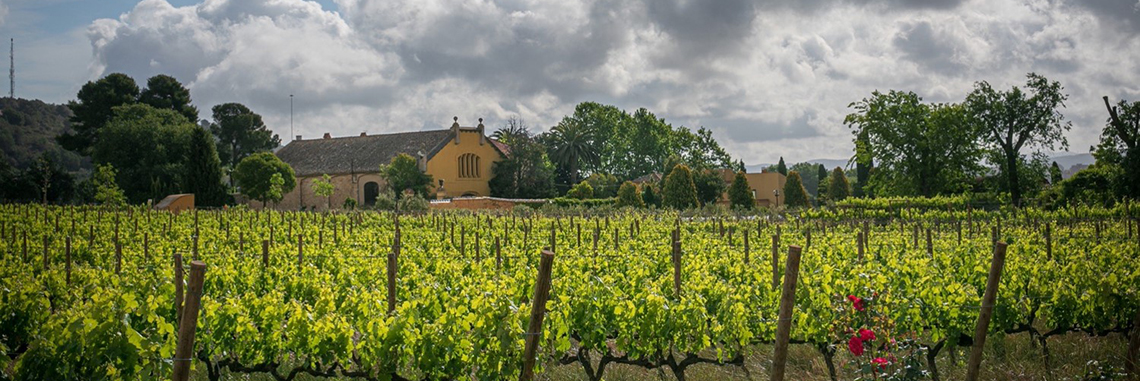MAS LA PLANA, A YEAR IN THE LIFE OF A GRAPEVINE

The hustle and bustle of the harvest is over. And yet, it is still possible to imagine, amid the silence that has fallen over the land, the effort and dedication of the people who so passionately worked these vineyards.
Recorded at the Mas La Plana vineyard in 2024
The Cycle of Life
- Between November and January, the vine loses its leaves and, as the cold settles in, the plant enters a dormant state with only latent activity. This winter dormancy lasts until February.
After the harvest – the culmination of the grapevine’s life cycle – the vines need their well-deserved winter slumber. Life is put on hold and thanks to this process, the plants are protected from the cold and other inclement weather that usually occurs during this time of year. All activity in the leaves stops. They gradually turn ochre, first changing the colour of the vineyards, then of the ground.
-
The first visible transformation – as beautiful as it is poetic – occurs between February and March. After pruning, sap seeps from the cuts, a process known as “sap bleeding” or el lloro de la vid – the “crying of the vine” in Spanish. This means budbreak is imminent.
-
Budbreak or budburst takes place in April, although this is highly contingent on the climate conditions affecting the plant. During budbreak, green shoots welcome the spring, emerging from the bud scales that protected them from the cold. Even so, fear of the dreaded frost is still high, because it could return them to a dormant state.
-
In May and June, the buds begin producing inflorescences or flower clusters, which will eventually bloom. The flowers open up to allow for pollination. Then the fertilized flowers develop into green berries, a process known as fruit set.
-
The true explosion of life, however, occurs between July and August when the vine shoots mature (shoot maturation) and veraison begins: the chlorophyll green gradually disappears, and each variety reveals its particular pigment. The grapes of white varieties acquire a yellowish hue whereas red varieties go from green to red and/or purplish blue, depending on the cultivar. After veraison, the seeds are fully formed, acidity is still high and sugar levels low.
-
Veraison: pure living visual poetry that expresses the astonishing processes occurring within the grapes, a gift from the engineering and alchemical wisdom of nature. An inevitable and anticipated postcard that reaches our estates and vineyards year after year. Rarely does Mas La Plana boast a more festive and colourful look than during this magical stage in the grapevine’s growth cycle.
“Grapes change colour with a specific natural goal in mind: to attract birds, which will eat the fruit and spread the seeds. A natural survival mechanism that continues to fascinate us.”
- Finally, we arrive at fruit maturation. The level of ripeness will influence the type of wine, because this is when the main varietal aromatic compounds and their phenolic content determine the quality of the must.
¿Pero qué sucede en el interior de las bayas hasta el momento de la vendimia?
During the months of June, July, August, and September, the grapes retain water and begin to swell. This is when sugar begins its journey from the leaves to the grapes. Sugar levels continue to gradually increase while acidity decreases. This process is known as sugar ripeness.
At the same time, physiological maturity activates the pigmentation process of the grapes, the formation of their many flavours, and the structure of their tannins, whose evolution depends on heat and sunlight. Although the vine does need water, slight water stress does benefit sugar concentration.
- The harvest is the culmination of this entire process. The grapes are picked when they present optimal levels of acidity and the appropriate crop load as the varietal aromas develop. Of course, it all depends on the desired winemaking style and the individual variety.
Nature forges ahead untamed, which is why it is up to us to understand its life cycle and apply the knowledge gained over centuries of winegrowing, not only to enjoy its fruit year after year, but to prolong its life, tame its spirit, and guarantee its future. After all, we depend on it, now and forever.
